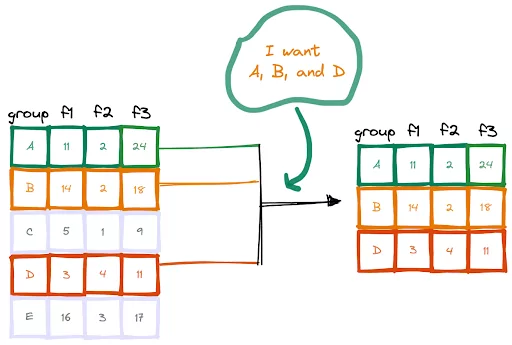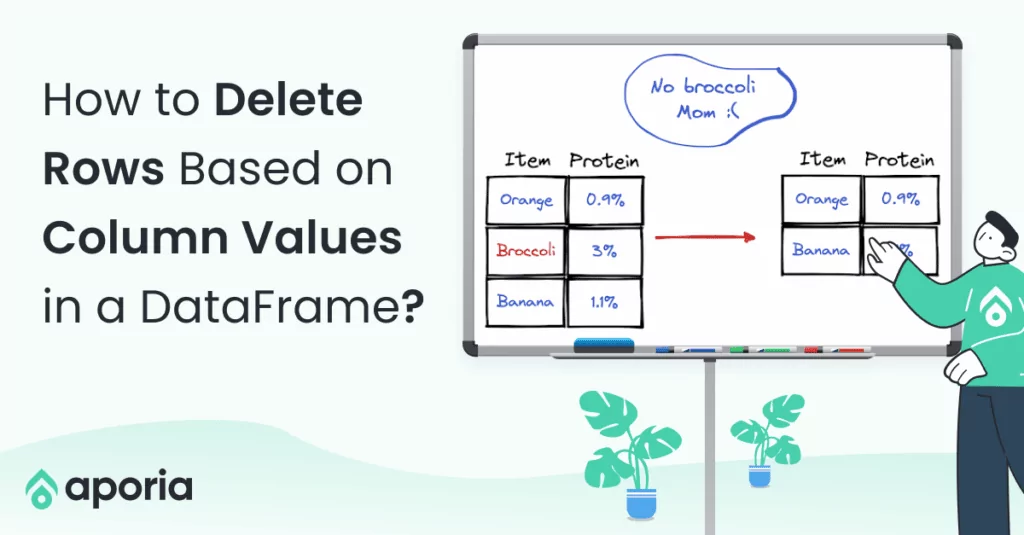
How to Build an End-To-End ML Pipeline With Databricks & Aporia
This tutorial will show you how to build a robust end-to-end ML pipeline with Databricks and Aporia. Here’s what you’ll...
Aporia has been acquired by Coralogix, instantly bringing AI security and reliability to thousands of enterprises | Read the announcement
Selecting rows based on a condition is a common operation in data wrangling. In this short how-to article, we will learn how to use a list of values to select rows from Pandas and PySpark DataFrames.

The isin method of Pandas can be used for selecting rows based on a list of conditions. We just need to write the conditions inside a Python list.
df = df[df.group.isin(["A","B","D"])]If you are interested in selecting rows that are not in this list, you can either add a tilde (~) operator at the beginning or set the condition as False.
# Tilde operator
df = df[~df.group.isin(["A","B","D"])]
# False condition
df = df[df.group.isin(["A","B","D"])==False]PySpark has an isin method which works similar to that of Pandas.
df = df.filter(df.group.isin(["A","B","D"]))Letter cases cause strings to be different in PySpark too. We can use the lower or upper function to standardize letter cases before searching for a substring.
# Tilde operator
df = df.filter(~df.group.isin(["A","B","D"]))
# False condition
df = df.filter(df.group.isin(["A","B","D"])==False)
This tutorial will show you how to build a robust end-to-end ML pipeline with Databricks and Aporia. Here’s what you’ll...

Dictionary is a built-in data structure of Python, which consists of key-value pairs. In this short how-to article, we will...

A row in a DataFrame can be considered as an observation with several features that are represented by columns. We...

DataFrame is a two-dimensional data structure with labeled rows and columns. Row labels are also known as the index of...
DataFrames are great for data cleaning, analysis, and visualization. However, they cannot be used in storing or transferring data. Once...

In this short how-to article, we will learn how to sort the rows of a DataFrame by the value in...

In a column with categorical or distinct values, it is important to know the number of occurrences of each value....

NaN values are also called missing values and simply indicate the data we do not have. We do not like...